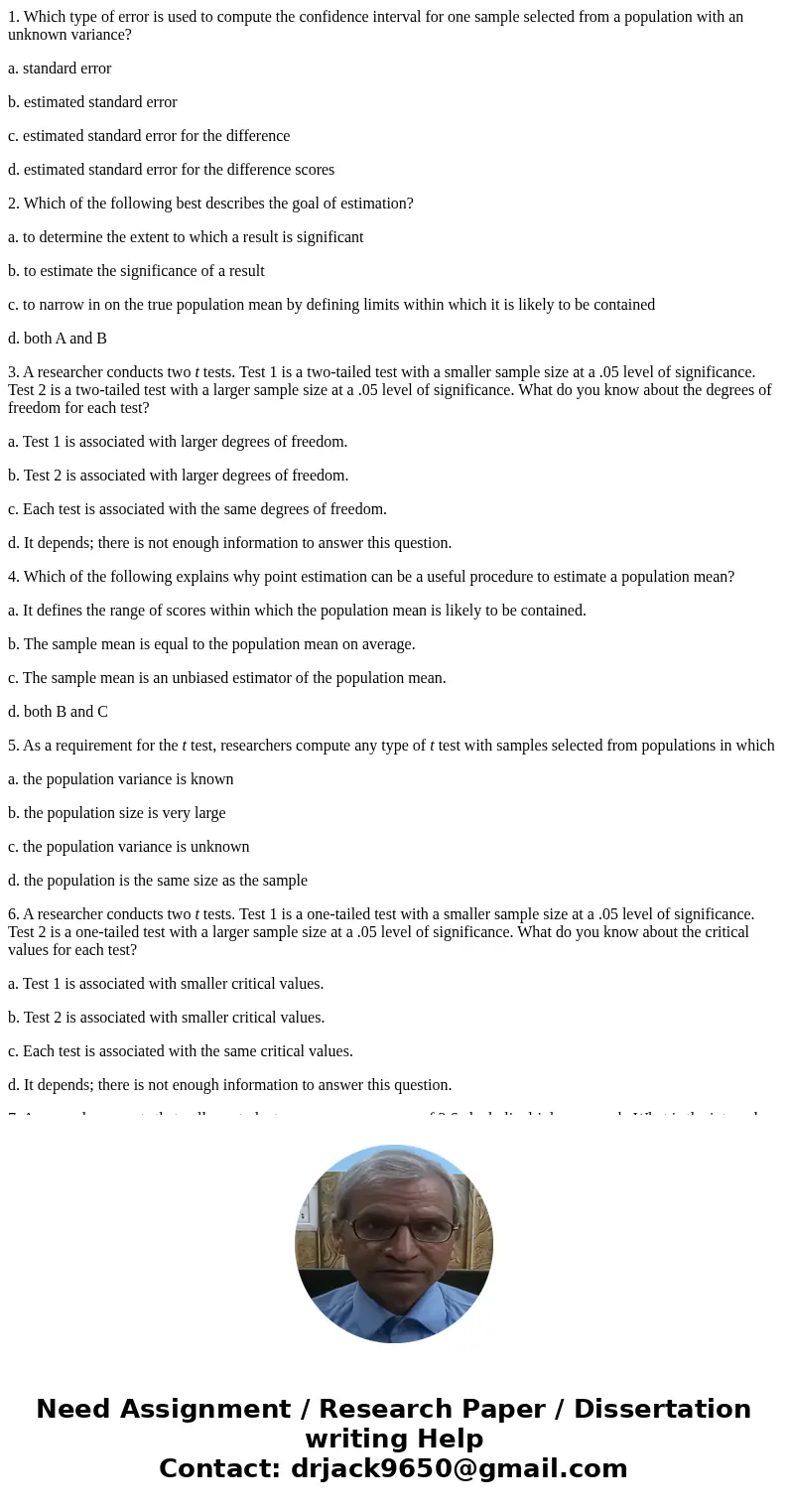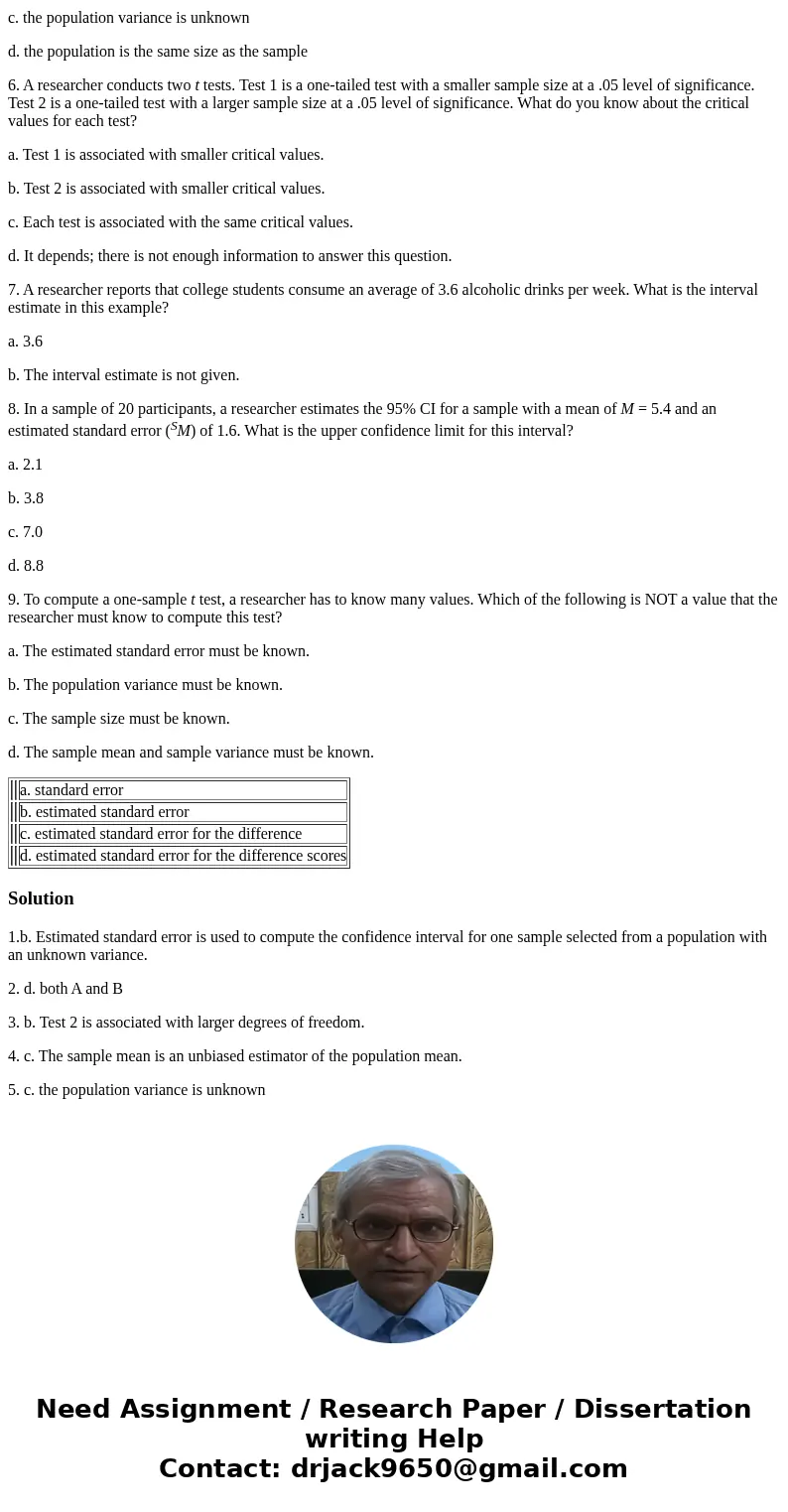1 Which type of error is used to compute the confidence inte
1. Which type of error is used to compute the confidence interval for one sample selected from a population with an unknown variance?
a. standard error
b. estimated standard error
c. estimated standard error for the difference
d. estimated standard error for the difference scores
2. Which of the following best describes the goal of estimation?
a. to determine the extent to which a result is significant
b. to estimate the significance of a result
c. to narrow in on the true population mean by defining limits within which it is likely to be contained
d. both A and B
3. A researcher conducts two t tests. Test 1 is a two-tailed test with a smaller sample size at a .05 level of significance. Test 2 is a two-tailed test with a larger sample size at a .05 level of significance. What do you know about the degrees of freedom for each test?
a. Test 1 is associated with larger degrees of freedom.
b. Test 2 is associated with larger degrees of freedom.
c. Each test is associated with the same degrees of freedom.
d. It depends; there is not enough information to answer this question.
4. Which of the following explains why point estimation can be a useful procedure to estimate a population mean?
a. It defines the range of scores within which the population mean is likely to be contained.
b. The sample mean is equal to the population mean on average.
c. The sample mean is an unbiased estimator of the population mean.
d. both B and C
5. As a requirement for the t test, researchers compute any type of t test with samples selected from populations in which
a. the population variance is known
b. the population size is very large
c. the population variance is unknown
d. the population is the same size as the sample
6. A researcher conducts two t tests. Test 1 is a one-tailed test with a smaller sample size at a .05 level of significance. Test 2 is a one-tailed test with a larger sample size at a .05 level of significance. What do you know about the critical values for each test?
a. Test 1 is associated with smaller critical values.
b. Test 2 is associated with smaller critical values.
c. Each test is associated with the same critical values.
d. It depends; there is not enough information to answer this question.
7. A researcher reports that college students consume an average of 3.6 alcoholic drinks per week. What is the interval estimate in this example?
a. 3.6
b. The interval estimate is not given.
8. In a sample of 20 participants, a researcher estimates the 95% CI for a sample with a mean of M = 5.4 and an estimated standard error (SM) of 1.6. What is the upper confidence limit for this interval?
a. 2.1
b. 3.8
c. 7.0
d. 8.8
9. To compute a one-sample t test, a researcher has to know many values. Which of the following is NOT a value that the researcher must know to compute this test?
a. The estimated standard error must be known.
b. The population variance must be known.
c. The sample size must be known.
d. The sample mean and sample variance must be known.
| a. standard error | ||
| b. estimated standard error | ||
| c. estimated standard error for the difference | ||
| d. estimated standard error for the difference scores |
Solution
1.b. Estimated standard error is used to compute the confidence interval for one sample selected from a population with an unknown variance.
2. d. both A and B
3. b. Test 2 is associated with larger degrees of freedom.
4. c. The sample mean is an unbiased estimator of the population mean.
5. c. the population variance is unknown


 Homework Sourse
Homework Sourse